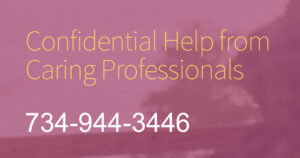Student stress is real and Saline Area School has been taking new initiatives to attend to it. A second community screening of Race to Nowhere was held in Saline on Thursday December 1st.
What do a Saline High School Climate Assessment, a Saline High School leadership retreat, and the film Race to Nowhere have in common? All of these seek to identify and find answers to a growing concern about student stress. Plus, all three events have happened in Saline recently. It is also of significance that all three have been sponsored by Saline Area Schools, which in addition to the goal of academic excellence is also taking a genuine interest in the overall well-being of its students.
The SHS climate assessment was completed in February 2011, via 8 focus groups of a cross section of SHS students and 2 trained facilitators from Still Waters Counseling. The results were delivered in April 2011 to the School Board. Students at SHS indeed feel a great deal of stress in many areas – academic, social, and personal. They want the school to be a warmer place, with more personal connections, and to have more adults they can turn to for help. This is a tall order, given the current economic climate and funding cuts from the state. Nevertheless, Saline Schools has responded to the needs expressed.
The Saline High School Leadership Retreat was held on November 17th – a powerful event for the Saline community. Approximately 40 high schoolers, from several different student groups, got together at Liberty Media Center and attended a dynamic workshop on Servant Leadership. This was followed by discussion of common high school scenarios generated by students themselves. The topics were derived from a desire to seriously discuss bullying, stereotyping, and intolerance in any shape or form at the high school, and come away with specific ways to address them. To make the school one where every student feels safe and respected is a difficult challenge, yet this would be one step closer to reducing a major source of stress in high school. Student leaders at the Nov 17thretreat seemed glad to embrace this task.
A brand new CDC study reporting on teen sleeping habits shows that 70% of high school students do not get at least eight hours of sleep on school nights. This statistic will probably not surprise any of the students at Saline High School, or any parent of a student at SHS. Between academics, extra-curriculars and part-time jobs, where is the time for 8 hours of sleep a night? Alarmingly, however, this new study also shows that teens with poor sleep habits are likely to take other risks associated with their health like consuming alcohol, using marijuana and tobacco products, and exhibiting poor eating habits. Now maybe those teens that sleep less are also the ones who would have engaged in negative behaviors anyway, but it does make sense that these negative habits could be a result of having to cope with a lot of stress.
